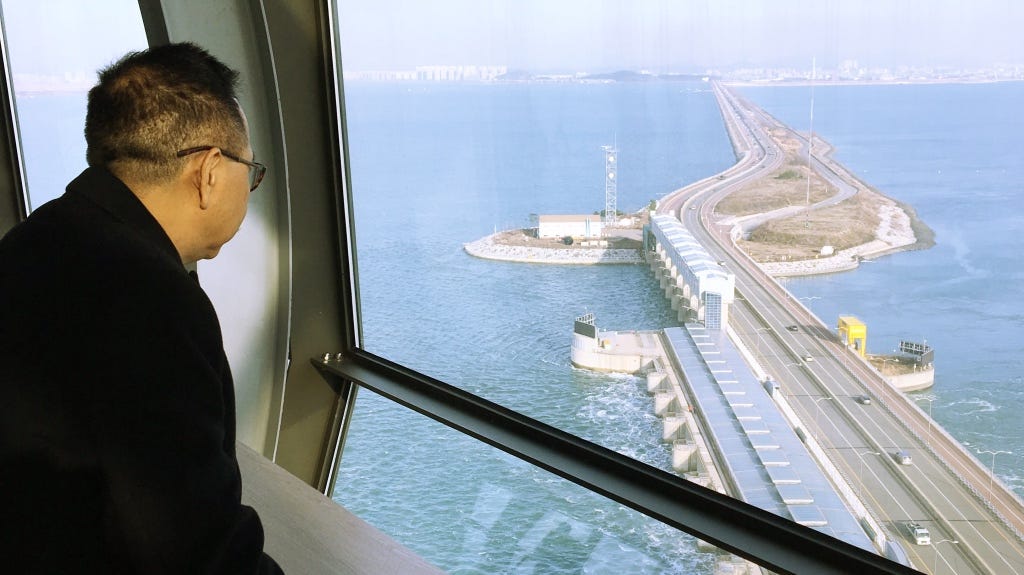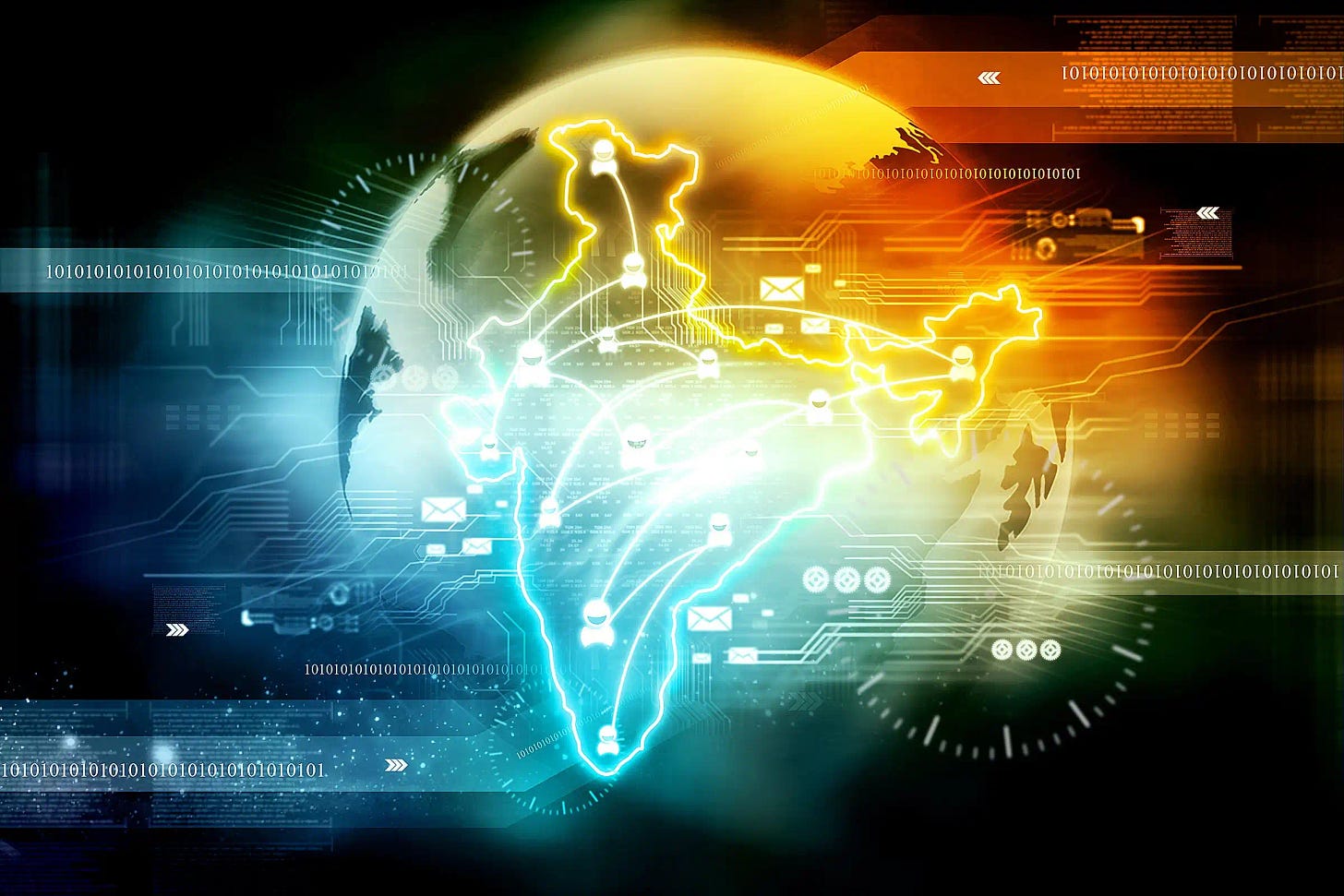Techno Babble
Asians in US not promoted, AI Chatbot conversations, AI and the law, Tidal power wave, Elon bans Ukraine drones, Quantum China, Foreign Media pay for Indonesian content, India-ASEAN digital links...
UPDATE: The Long Mekong Weekend Edition goes decidedly digital. Asians in America don’t get promoted in Silicon Valley, or anywhere else apparently. Microsoft, Baidu, Tencent and Google, all showed off ChatGPT-inspired technology, more voices more chat more AI. The use of AI in judicial systems is being explored by judiciaries, prosecution services and other domain specific judicial bodies around the world. Elon Musk Tweeted that SpaceX was “not allowing Starlink to be used for long-range [Ukrainian] drone strikes.” Indonesia is moving to make foreign media platforms pay for Indonesian content. India is big in software and software services and eager to collaborate with ASEAN to advance Information and Communication Technologies in the region.
The Long Mekong’s 10,000 readers and 1000 subscribers will be receiving this weekend edition via digital devices so have a nice AI weekend!
The Editor
Asian Americans Are the Least Likely Group in the U.S. to Be Promoted to Management
Asian Americans are the forgotten minority in the glass ceiling conversation. This was painfully obvious to us while reading the newly released diversity and inclusion report from a large Silicon Valley company. But excluded from the report was the fact that Asian Americans are the least likely racial group to be promoted into Silicon Valley’s management and executive levels, even though they are the most likely to be hired into high-tech jobs. This was a key finding in a 2017 report we coauthored for the Ascend Foundation (“The Illusion of Asian Success”), analyzing EEOC data on Silicon Valley’s management pipeline.
Across the country, the results are the same. Our analysis of national EEOC workforce data found that Asian American white-collar professionals are the least likely group to be promoted from individual contributor roles into management. It is easy to understand why Asian American representation in the workforce may not seem to be an issue. In some key measures, Asian Americans are the most successful U.S. demographic — more highly educated, for example, and with higher median incomes than any other racial group. More significant, Asian Americans are 12% of the professional workforce while making up only 5.6% of the U.S. population. This fact underlies the potential blind spot for many companies: Because Asian Americans are not considered an underrepresented minority, they are given little priority or attention in diversity programs. We have found that in many companies throughout the country, Asian-related programs are geared toward cultural inclusion, not management diversity.
Read full article here.
The Chatbot Search Wars Have Begun
Microsoft, Baidu, Tencent and Google, all showed off ChatGPT-inspired technology to reinvent web search this week. In case you’ve been living in outer space, you'll know about ChatGPT (chatbot) made by the AI startup OpenAI. People are losing their minds over ChatGPT’s ability to answer questions in strikingly coherent and seemingly insightful and creative ways.
Microsoft announced that it is rewiring its Bing search engine to effortlessly generate a vacation itinerary, summarise the key points of product reviews, and answer tricky questions, like whether an item of furniture will fit in a particular car.
Also joining the new AI search wars is Baidu, China’s biggest search company. It joined the fray by announcing another ChatGPT competitor, Wenxin Yiyan (文心一言), or "Ernie Bot". Baidu says it will release the bot after completing internal testing this March.
Tencent has also introduced its Weixin chatbot AI to WeChat. The insanely useful WeChat runs mini-apps and chatbot is available to al, but is still in beta testing mode.
Google is also releasing a competitor to ChatGPT called Bard. Its AI researchers developed the machine learning algorithm at the heart of ChatGPT, known as a transformer, as well as a key technique used to make AI imagery, known as diffusion modeling. The company said it would start making the AI behind the chatbot available to developers.
Read Wired article here or visit Weixin AI here.
AI and the Rule of Law: Capacity Building for Judicial Systems
The use of AI in judicial systems is being explored by judiciaries, prosecution services and other domain specific judicial bodies around the world. For example, in the criminal justice field, the use of AI systems for providing investigative assistance and automating decision-making processes is already in place in many judicial systems across the world. Considering rapid developments in this field, the challenges and opportunities related to harnessing AI in judicial systems and their implications for human rights and the rule of law must form part of discussions among stakeholders from the judicial ecosystem. Therefore, this online training course in the form of a Massive Online Open Course (MOOC) is being developed in cooperation with UNESCO’s category 2 centre CETIC and the IEEE in response to the needs expressed by UNESCO Member States, judges and other stakeholders.
Artificial Intelligence and Digital Transformation
Artificial Intelligence (AI) has enormous potential to be used for social good and achievement of the Sustainable Development Goals (SDGs). Even as it is being used to help address many of humanity’s most critical social issues, its use is also raising concerns about infringement of human rights like the right to freedom of expression, right to privacy, data protection, and non-discrimination. AI-based technologies offer major opportunities if they are developed in respect of universal norms, ethics and standards, and if they are anchored in values based on human rights and sustainable development.
Read the UNESCO info page here or download the report on US courts and AI here.
Ocean power: a running tide for renewables in Asia
As the world continues to manage, or not, the fallout from a reliance on capricious energy markets, renewables once again have the opportunity to stand head and shoulder above the rest when it comes to future energy planning. Southeast Asia is a region of the world remarkably suited to Tidal power.
If there is one certainty in today’s changeable world, it is that tides will rise and fall. Southeast Asia is blessed with ocean space, largely comprising islands or ocean-bound states – known either as Mainland or Maritime Southeast Asia – in the Indian and Pacific oceans. The region is increasingly interesting to academics, who consider how renewable power techniques and technologies can be utilised for the more than 660 million people living there. Among them are ocean thermal energy, salinity gradient technologies, wave and tidal power generation, collectively known as ocean renewable energy (ORE).
“Oceans contain vast renewable energy potential”, according to the International Renewable Energy Agency (IRENA), “theoretically equivalent to more than double the world’s current electricity demand.” In a 2020 report, “Innovation Outlook: Ocean Energy Technologies”, it concluded ocean energy could provide “affordable, reliable electricity” for small island developing states, as well as “boosting potable water supplies via seawater desalination”; arguably highly attractive to Southeast Asia given its geographical make-up.
Read full article here.
Elon Musk: No SpaceX Starlink for Ukraine drones
Elon Musk’s Starlink satellite internet service has provided an online link for Ukraine even in areas where digital infrastructure has been wiped out. But the extent of the military’s use of the technology is now coming into question after remarks in recent days by Mr. Musk and an executive at SpaceX, Mr. Musk’s rocket company, which operates the Starlink service.
Mr. Musk said last week on Twitter that SpaceX was “not allowing Starlink to be used for long-range drone strikes.” And on Wednesday, Gwynne Shotwell, Starlink’s president and chief operating officer, said at a conference in Washington that Starlink was “never meant to be weaponized.”
Ukraine, Ms. Shotwell said, had leveraged the technology “in ways that were unintentional and not part of any agreement,” according to Reuters. She added that Starlink had taken steps to curtail the Ukrainian military’s use of the technology for controlling drones.
Ukrainian officials on Thursday responded with a mix of anger and diplomacy, though they did not directly address the claims.
Mykhailo Podolyak, a senior adviser to Ukraine’s president, Volodymyr Zelensky, tagged Ms. Shotwell in a Twitter post, saying that companies are either on the side of Ukraine and “the right to freedom,” or they are on the Russia’s side and the “right to kill and seize territories.” Starlink, he said, “should choose a specific option.”
Read the full article here.
Is China’s Latest Quantum Leap a Game Changer?
China claims to have the capability to deliver a homemade, fully-functional quantum computer, making it the third country to do so after the United States and Canada. Despite quantum computing experts calling the announcement “formidable,” a GlobalData analyst argues China’s latest quantum computer won’t have a significant impact on the global market.
Origin Quantum Computing Technology, headquartered in China’s Anhui province, has delivered a 24-qubit quantum computer based on superconducting chip technology – dubbed Wuyuan – to an unknown user. The company also built an ecological chain for the computer including software, an operating system, and a cloud platform, according to a report from the South China Morning Post.
China leads in supercomputing. Unlike Google's 53-qubit Sycamore quantum supercomputer that is based on electrons and superconductors, the latest Chinese achievement in the field dubbed Zuchongzhi can process 66 qubits and is based on optical circuits and photons.
Read full article here and here.
Indonesia drafts law enabling media to receive payments from digital platforms for content
Indonesia is drafting a regulation allowing media outlets to receive payments from digital platforms or aggregators that carry their content, its Press Council said on Thursday, February 9. The new law is expected to level the playing field between media and tech firms in terms of providing content and generating profit, said Arif Zulkifli, a member of Indonesia’s Press Council.
The law, proposed two years ago, was inspired by similar legislation in Germany and Australia, and is expected to be issued as a presidential regulation within a month. Digital platforms in Indonesia include Facebook, Alphabet Inc’s Google, and some local aggregators. Arif said these platforms benefit from carrying content generated by media companies while “most media receive small profits”. “(There is) no balance in this,” he said. Under the new law, the Press Council will determine price structures and payments schemes, while also acting as mediator in the event of a dispute.
Speaking at an event commemorating Indonesian press on Thursday, President Joko Widodo cited an urgent need for the new law since 60% of the advertisement market in the Southeast Asian country is dominated by mainly foreign digital platforms.
“Around 60% of advertisement spending were taken by digital media, especially foreign platforms. This is sad,” he said.
Read full story here.
India-ASEAN Digital Work Plan 2023 approved at 3rd ASEAN Digital Ministers (ADGMIN) meeting
India is eager to collaborate with member states of ASEAN to advance Information and Communication Technologies. The 3rd ASEAN Digital Ministers (ADGMIN) meeting with India was held today on a virtual platform. The Minister of State for Communications (MoSC), Shri Devusinh Chauhan, and Mr. Ivan John E. Uy, Secretary, Department of Information and Communication Technology, Philippines co-chaired the meeting.
Addressing the august gathering of Digital Ministers, Shri Devusinh Chauhan stated that our Prime Minister, Shri Narendra Modi emphasizes to utilize various technological innovations to advance the nation's development. To further support the growth of the telecom industry, promote fair competition, and increase the availability of broadband and telecom connectivity, the Indian government has ushered a new era of reforms in the telecom sector to encourage investment. MoSC emphasized that digital transformation is essential for achieving an inclusive and equitable society, sustainable development, and empowering citizens through digital means. He added that India is eager to collaborate with member states of ASEAN to advance Information and Communication Technologies in the region, aiming towards shared prosperity.
In 2022, ASEAN India Friendship Year was celebrated, commemorating 30th anniversary of establishment of dialogue relations with ASEAN which culminated into ASEAN and India elevating Strategic Partnership to the Comprehensive Strategic Partnership (CSP). Under the theme: “Synergy Towards a Sustainable Digital Future”, the meeting had fruitful and productive discussions on strengthening India ASEAN relations in the field of Information and Communication Technologies (ICTs).
The Ministers meeting approved the India-ASEAN Digital Work Plan 2023. The workplan includes the capacity building and knowledge sharing in emerging areas in the field of Information and Communication Technologies such as Artificial Intelligence in Cyber Security, Application of IoT & AI in Next Generation Smart City & Society 5.0, Sustainable Data and Transport Network for Future: Standards and Applications, 5G technologies for IoT and future trends, Role of ICT in implementation of Digital Health and Security protection and assessment for future network, etc. The ongoing and proposed projects in ICTs, will strengthen collaboration between India and ASEAN by leveraging complementary strengths of each other.
Read full story here.











